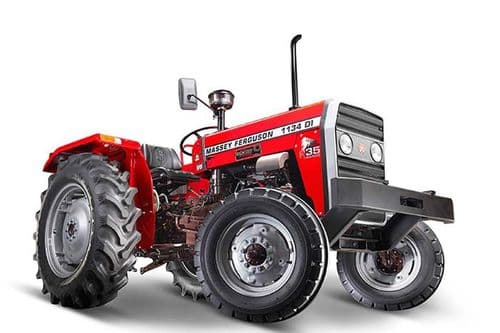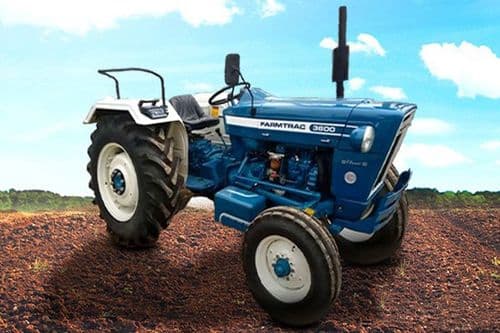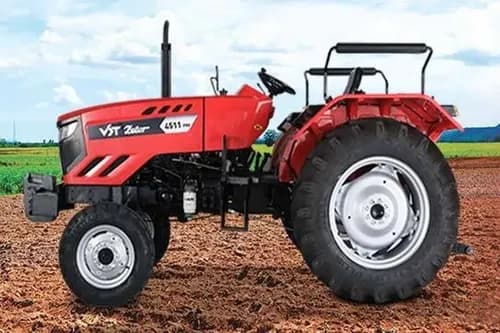Ad
Ad
Onion Production: A Comprehensive Guide to Onion Farming
Onion is one of the most consumed vegetables in the world. Successful onion production requires careful attention to soil quality, climate conditions, and proper crop management. This guide will provide insights into onion production and onion farming, types of onion, from choosing the right varieties to harvesting and storage techniques.

Onions, a basic ingredient in kitchens, play a pivotal role in enhancing the flavour of dishes. Their versatility and nutritional value make them a staple in various cuisines and Chinese food.
Allium cepa is the scientific name of Onions. Onion is one of the most consumed vegetables in the world. For farmers, onion farming can be a rewarding and profitable venture. In India, onion farming has a rich history, and it is a main crop for both domestic consumption and export.
This guide will provide insights into onion production and onion farming, types of onion, from choosing the right varieties to harvesting and storage techniques.
Onion Production
Onion production is a vital component of the agriculture industry, contributing significantly to global food markets. Onions are in high demand due to their flexibility and widespread cooking use. Successful onion production requires careful attention to soil quality, climate conditions, and proper crop management.
Farmers employing advanced farming practices, such as precision farming and efficient irrigation, can maximize onion production and quality. From well-drained soils to optimal planting depths, every detail matters in onion farming. Additionally, the types of onion, pest control measures, and timely harvesting play important roles in ensuring a plentiful harvest.
Also Read: Vegetable Farm: A Guide To Organic Vegetable Farming
Types of Onions
In India, onions are used in almost all dishes because it adds flavour and aroma to the dishes. There are several types of onions cultivated across the country, each with its unique characteristics. Here are a few types of onions found in India:
Red Onions: Red onions are grown in various states across India, including Maharashtra, Karnataka, Gujarat, and Uttar Pradesh. Red onions have purplish-red skin and a mild to sweet flavour. They are commonly used in salads, sandwiches, and Indian pickles.
Spring Onions: Spring onions are cultivated in various parts of India, including Himachal Pradesh, Jammu and Kashmir, and the hilly regions. Spring onions have long, green onion leaves and small white onions. They have a mild flavor and are often used in salads, garnishes, and Chinese cuisine.
Yellow Onions: Yellow onions are grown in states such as Maharashtra, Gujarat, Karnataka, and Uttar Pradesh. Yellow onions are widely used in Indian cooking for curries, soups, and stir-fries.
White Onions: White onions are cultivated in states like Maharashtra, Gujarat, Karnataka, and Andhra Pradesh. White onions have white or light yellow skin and a milder flavour compared to red onions. They are often used in salads, salsas, and Chinese cuisines.
Shallots: Shallots are grown in states like Tamil Nadu, Kerala, Karnataka, and Maharashtra. Shallots have a sweet and mild flavour, making them popular in South Indian and Southeast Asian cuisines.
Pearl Onions: Also known as baby onions, pearl onions are small, round, and have a sweet flavour. They are often used in pickles and Indian dishes like sambar. Pearl onions are cultivated in states such as Tamil Nadu, Karnataka, Maharashtra, and Andhra Pradesh.
The onions production is influenced by factors such as climate, soil conditions, and local preferences. Each type of onion contributes its unique taste and texture to the Indian cuisine.
** Best Soil for Onion Farming**
The ideal soil pH ranges from 6.5 to 7.5. Prepare the soil by ploughing and incorporating organic matter (such as farmyard manure or poultry manure) to enhance fertility. Onions grow in a variety of soils, from sandy loam to clay loam, as long as they have good drainage.
Climatic Conditions for Onion Growth
Onion crops require mild weather without extreme cold, heat, or excess rainfall. Here are the temperature ranges for different growth stages:
- Vegetative stage: 13-24°C
- Bulbing stage: 16-21°C
- Maturity and harvest: 30-35°C
The onion-growing seasons in India are as follows:
- Kharif Season (May-September): Onion only
- Late Kharif Season (August-February): Onion only
- Rabi Season (October-April): Onion and garlic
Field Preparation and Spacing for Onion Crop
Plough the land for good tillage. Incorporate organic matter during the last ploughing. Create flatbeds or broad-based furrows (BBF) for planting. The recommended spacing for onion plants/trees is 15 cm between rows and 10 cm within rows.
Irrigation Method for Onion Crop
Onion is primarily an irrigated crop. The frequency of irrigation is determined by weather conditions and soil type. When transplanting the seedlings, irrigate the field. On the third day after transplanting, give another irrigation.
Then, depending on the soil's wetness, irrigate every 10 to 15 days. Irrigate the field for 10 days before harvest. Avoid overwatering or underwatering, since both can have an impact on onion growth and development. A drip or sprinkler irrigation system can be considered for irrigation.
Crop Rotation and Mixed cropping
Consider cropping rotation to maintain soil health. During the first 5 months after planting sugarcane, onions can be planted as an intercrop. They can be grown in rotation with legumes, corn, brassicas, and solanaceous plants. Onions are feeders that can quickly deplete soil minerals. Rotating onions with legume crops can assist in replacing nitrogen in the soil.
Corn, on the other hand, is a non-host for onion pests and diseases, which can aid in the reduction of their buildup in the soil. Likewise, rotating brassica and solanaceous crops with onions can help to maintain soil health and minimize pest and disease buildup.
Harvesting Time for onion farming
Harvesting time is determined by the purpose for which the crop was cultivated. Harvesting time for dry onions is 5 months while harvesting time for green onions is 3 months after harvesting. The guideline for harvesting rabi onion is 50% of the neck/top falling over.
The bulbs are manually uprooted during harvesting. However, because the top does not fall over during the Kharif season, the sign of harvest is a shift in the colour of the leaves to a small yellow and red pigmentation on bulbs.
During summer, when the soil is hard, dig out the bulbs with a hand hoe. Spray the crop with Carbendazim 2 gm/lit of water to prevent the harvested onion from fungal infections after harvest. Once cured, the onions can be stored in a well-ventilated area.
It is critical to keep them in a well-ventilated environment to avoid mould and damage. If onions are properly cured and preserved, they can be kept for several months.
Diseases in Onion crop yield
Here are 10 common diseases that affect onion crops:
- Damping off
- Basal rot
- Downy mildew
- Stemphyllum Blight
- Bacterial brown rot (Serious disease during storage)
- Smut
- White rot
- Neck rot
- Onion yellow dwarf Vector: Aphids
- Irish Yellow Spot Virus Vector: Thrips
Onion: Is a Vegetable Or Fruit?
A vegetable is the edible part of a plant with a soft stem whereas a fruit is the mature ovary of a plant with a woody stem, typically containing seeds. Onions are considered as vegetables. They are a member of the Allium genus, which also includes garlic, shallots, leeks, and chives.
While onions are commonly used in savoury dishes and have a pungent flavour, they do not develop from the ovary of a flower like fruits typically do. Instead, onions grow as underground bulbs and are considered vegetables in edible terms.
Also Read: Wheat Farming: Process and Best Tractors for Wheat Farming
Conclusion
Onion farming, when performed with knowledge and care, can be a fulfilling and profitable venture for agriculture enthusiasts or farmers. From selecting the right types of onions to implementing effective cultivation and management practices, each step contributes to successful onion production.
Whether you’re a small-scale farmer or part of a large commercial firm, mastering onion cultivation can be rewarding. By following this comprehensive guide, aspiring onion producers can embark on a journey to cultivate not just onions but also a thriving agricultural enterprise.
Features & Articles
Comprehensive Guide to Tractor Transmission System: Types, Functions, and Future Innovations
Learn about tractor transmission types, components, functions, and selection factors to enhance efficiency, performance, and agricultural productivity....
12-Mar-25 09:14 AM
Read Full NewsModern Tractors and Precision Farming: Transforming Agriculture for Sustainability
Precision farming enhances agriculture by integrating GPS, AI, and modern tractors for sustainable, efficient, and productive farming practices in India....
05-Feb-25 11:57 AM
Read Full NewsTop 10 Tractors Under 30 HP in India 2025: Guide
Top 10 tractors under 30 HP in India offer efficiency, affordability, and power, ideal for small farms with diverse agricultural needs....
03-Feb-25 01:17 PM
Read Full NewsNew Holland 3630 TX Super Plus vs Farmtrac 60 PowerMaxx: Detailed Comparison
Compare New Holland 3630 and Farmtrac 60 tractors by specs, price, and features to find the perfect fit for your farm....
15-Jan-25 12:23 PM
Read Full NewsSwaraj 735 FE Vs Eicher 380 2WD Prima G3: Detailed Comparison
The Swaraj 735 FE and Eicher 380 2WD Prima G3 are reliable, powerful tractors suited for various farming tasks....
14-Jan-25 09:41 AM
Read Full NewsHow to Choose the Perfect Tractor for Your Farm: A Comprehensive Guide
Choose the right tractor by assessing farm needs, horsepower, efficiency, comfort, and budget to enhance productivity and savings....
09-Jan-25 09:43 AM
Read Full NewsAd
Ad
As featured on:


Registered Office Address
Delente Technologies Pvt. Ltd.
M3M Cosmopolitan, 12th Cosmopolitan,
Golf Course Ext Rd, Sector 66, Gurugram, Haryana
pincode - 122002

























